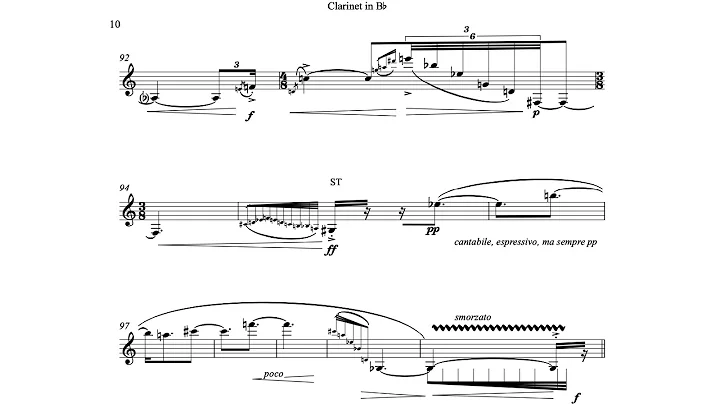Thomas L Siwecki
age ~61
from Danville, CA
- Also known as:
-
- Thomas Lee Siwecki
- Thomas C Siwecki
- Thomas C Cheng
- Tom C Siwecki
- Phone and address:
- 1026 Belleterre Dr, Danville, CA 94506
Thomas Siwecki Phones & Addresses
- 1026 Belleterre Dr, Danville, CA 94506
- Belleterre Dr, Danville, CA 94506
- Banning, CA
- Boise, ID
- Sedona, AZ
- Escondido, CA
- Sherwood, OR
- Concord, CA
- Tualatin, OR
- Palos Park, IL
License Records
Thomas Lee Siwecki
Address:
1026 Belleterre Dr, Danville, CA 94506
License #:
A1753673
Category:
Airmen
Us Patents
-
Passive Active Underwater Sound Detection Apparatus
view source -
US Patent:49742132, Nov 27, 1990
-
Filed:Mar 20, 1989
-
Appl. No.:7/326508
-
Inventors:Thomas L. Siwecki - Danville CA
-
International Classification:G01S 1500
-
US Classification:367 88
-
Abstract:A three-dimensional large scale rectilinear array of hydrophones comprising a plurality of equally spaced, fixed position, omni-directional, electro-acoustic transducers, utilizes aperture steering circuits to create a polar coordinate map indicating the bearing and elevation of incoming sound signals. The attitude and depth of the array is controlled by an array maneuvering system to position the array for maximum signal strength and to rotate the array to a horizontal position for maneuvering in shallow water. The geometric configuration combined with digital signal processing circuits provide improved sound detection threshold over linear and single planar arrays. An acoustically transparent housing is used to enclose the array. The shape of the housing and supporting structural frame are adapted to limit self-induced background noise. The hydrophones are also alternately connected to circuits for activating the hydrophone array to produce a low frequency (100 to 1000 Hz) frequency sound pulse defining a beam having a predetermined vertical and horizontal solid angle and predetermined bearing and azimuth.
-
Rotating Solution Separation System
view source -
US Patent:43338321, Jun 8, 1982
-
Filed:Aug 29, 1977
-
Appl. No.:5/828903
-
Inventors:Thomas L. Siwecki - Walnut Creek CA
Gerry B. Andeen - Menlo Park CA -
International Classification:B01D 3100
-
US Classification:2101952
-
Abstract:Salt water and other solutions are accelerated in a rotating structure and applied to a cannister containing reverse osmosis membrane material. The desalinated water is removed after passing through the large surface area concentration of membrane material in the cannister. The enriched brine is removed from the cannister at a point furthest from the axis of the rotating structure and returned to the vicinity of the axis to prevent the buildup of dense material. The membrane material is configured in the cannister so that the flow is generally radially with respect to the axis of the rotating structure.
-
Method And Apparatus For Recording On A Disk Supported Deformable Metallic Film
view source -
US Patent:44109687, Oct 18, 1983
-
Filed:Sep 16, 1980
-
Appl. No.:6/187779
-
Inventors:Hugh F. Frohbach - Sunnyvale CA
Robert E. Myers - Menlo Park CA
Norman A. Peppers - Belmont CA
Thomas L. Siwecki - Walnut Creek CA
Louis F. Schaefer - Palo Alto CA -
International Classification:G11B 700
-
US Classification:369 44
-
Abstract:Information is stored, using a relatively low-power light beam, by redistributing the material in a deformable film. In a disc configuration, positioning of the light beam is achieved by referencing to a previously recorded track. In a document storage and retrieval system the document is scanned with the resultant scanned signal modulating the writing light beam producing a recorded track. This track is optically read with the resultant signal applied to a printer. For optimum utilization of the area, the recording and readout take place at constant velocity.
-
Color Television Film Scanning System Using Uniform Motion And Line Arrays
view source -
US Patent:43108474, Jan 12, 1982
-
Filed:Aug 4, 1978
-
Appl. No.:5/930984
-
Inventors:Hugh F. Frohbach - Sunnyvale CA
Albert Macovski - Menlo Park CA
Norman A. Peppers - Belmont CA
Thomas L. Siwecki - Walnut Creek CA
Louis F. Schaefer - Palo Alto CA -
Assignee:World Development Laboratories - Los Angeles CA
-
International Classification:H04N 904
-
US Classification:358 54
-
Abstract:A color image is recorded on film at the television field rate. A portion of the film is illuminated, corresponding to a line in the color image, and decomposed into its component colors. The decomposed light from the line is imaged onto two or more line scanning photosensitive arrays which provide scanned signals. These scanned signals are decoded and used to provide the standard color television signals.
-
Color Television Encoding And Decoding System
view source -
US Patent:42610079, Apr 7, 1981
-
Filed:Jun 4, 1979
-
Appl. No.:6/045179
-
Inventors:Hugh F. Frohbach - Sunnyvale CA
Robert E. Myers - Menlo Park CA
Norman A. Peppers - Belmont CA
Thomas L. Siwecki - Walnut Creek CA
Louis F. Schaefer - Palo Alto CA
Albert Macovski - Menlo Park CA -
Assignee:Laser-File Inc. - Los Angeles CA
-
International Classification:H04N 588
-
US Classification:358 5
-
Abstract:A color image is recorded on film at the television field rate with alternate film frames representing the luminance and chrominance information. The chrominance information is encoded by filtering the color image through a striped color filter. On playback two line scanners are used to simultaneously scan the luminance and chrominance frames to provide the desired information simultaneously. A decoding signal is used to decode the encoded chrominance information and derive color-difference signals.
Resumes

President, Kiawe Corp.
view sourceLocation:
San Francisco Bay Area
Industry:
Information Technology and Services

Independent Computer Software Professional
view sourceLocation:
San Francisco Bay Area

Thomas Siwecki
view sourceYoutube
Mylife

Thomas Siwecki Search .com
view sourceAre you looking for Thomas Siwecki? MyLife is happy to assist you on the quest as we dedicate our efforts to streamline to process of finding long-lost ...
Get Report for Thomas L Siwecki from Danville, CA, age ~61





